- AboutAboutBoomtown
About Boomtown
9.8 million people live in regional Australia. Find out how to harness our valuable audiences.
Meet the Residents
Some of our locals share what life’s like in regional Australia! You may be surprised.
Boomtown News
Keep up to date with news and updates about Boomtown.
Contact Us
Boomtown’s here to help your grow your brand and business. Don’t be shy!
Download Your Boomtown Guide
A comprehensive guide and one-stop-shop to regional media, markets and audiences.

- EvidenceEvidence
Uncapped & Untapped
Australia’s top CMOs talk advertising in regional.
Where Brands Go To Grow
Reasons why regional Australia is the place to be.
Mood Monitor 2024
Tracking their moods, concerns, spending patterns and what regional Aussies are saving for.
Back Catalogue
Catch up on past initiatives and competitions.
Summer Survey
Boomtown heats up every Summer. Will your brand meet them there?
Case Studies
How brands in key categories have grown by harnessing 9.8 million regional Aussies.
RAI Report
Discover the latest data and insights on metro Aussies moving to the regional from the Regional Australia Institute.
City Spotlights
Take an in-depth look at some of Australia’s top regional cities.

- EducationEducationMasterclass
Learn The Growing Power Of Regional Media
Learn all the skills and secrets of regional media, boost your brand and reach your potential.
Help your brands reach 9.8 million more Australians.
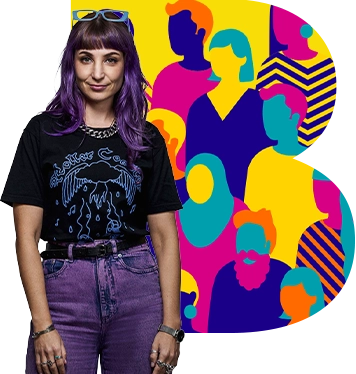
- The Boomtown HubTheBoomtown Hub
The Boomtown Hub’s your planning tool to regional Australia.
9.8 million regional Australians are all yours in a matter of minutes.
Search interactive maps, discover thousands of markets and hundreds of assets, download your results as CSVs and maps, and use our streamlined tool to brief media owners simultaneously.

- AboutAboutBoomtown
About Boomtown
9.8 million people live in regional Australia. Find out how to harness our valuable audiences.
Meet the Residents
Some of our locals share what life’s like in regional Australia! You may be surprised.
Boomtown News
Keep up to date with news and updates about Boomtown.
Contact Us
Boomtown’s here to help your grow your brand and business. Don’t be shy!
Download Your Boomtown Guide
A comprehensive guide and one-stop-shop to regional media, markets and audiences.

- EvidenceEvidence
Uncapped & Untapped
Australia’s top CMOs talk advertising in regional.
Where Brands Go To Grow
Reasons why regional Australia is the place to be.
Mood Monitor 2024
Tracking their moods, concerns, spending patterns and what regional Aussies are saving for.
Back Catalogue
Catch up on past initiatives and competitions.
Summer Survey
Boomtown heats up every Summer. Will your brand meet them there?
Case Studies
How brands in key categories have grown by harnessing 9.8 million regional Aussies.
RAI Report
Discover the latest data and insights on metro Aussies moving to the regional from the Regional Australia Institute.
City Spotlights
Take an in-depth look at some of Australia’s top regional cities.

- EducationEducationMasterclass
Learn The Growing Power Of Regional Media
Learn all the skills and secrets of regional media, boost your brand and reach your potential.
Help your brands reach 9.8 million more Australians.

- The Boomtown HubTheBoomtown Hub
The Boomtown Hub’s your planning tool to regional Australia.
9.8 million regional Australians are all yours in a matter of minutes.
Search interactive maps, discover thousands of markets and hundreds of assets, download your results as CSVs and maps, and use our streamlined tool to brief media owners simultaneously.

How Suncorp ensures regional marketing and media success
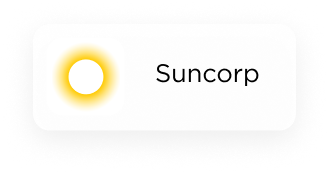


When Suncorp’s EGM of Brand and Marketing, Mim Haysom, thinks about regional marketing, she not only sees the prospect of brand and business growth, but creative possibility.
“With regional, there’s a really great opportunity to marry up the insight with the environmental context creatively,” Haysom says. “We’ve done it with our Suncorp brand in Queensland, and our overall resilience messaging. The ‘One House’ project is a good example, as was the follow-up campaign, ‘Resilience Road’. That messaging was really targeted to a regional audience and the weather perils they are most at risk of facing.”
Highly creative work driven by regional insight can also be seen in the ‘AAMI Warning Spots’ campaign, which geotargeted consumers on driving holidays in regional areas in order to reduce their chance of accidents through fatigue. The follow-up, ‘AAMI Rest Towns’, had the dual purpose of minimising accidents while drumming up commerce for local businesses across regional areas hit by the triumvirate of floods, bushfires and the Covid pandemic.
All three campaigns lifted Suncorp and AAMI’s brand consideration, positive sentiment and customer quotes significantly. They also all won Cannes Lions accolades – most notably, the Grand Prix award for innovation for the Suncorp ‘One House to Save Many’ in 2022.
“Some marketers might think you’ve got to go metro and big scale to win creative and effectiveness awards. We’ve actually found the more targeted, bespoke and creative you are with regional audiences, the greater the impact,” Haysom says. “There’s a great opportunity from a brand, business, customer and creative perspective to be found if you’re willing to do the work to drill in and find the insights.”
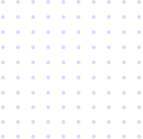
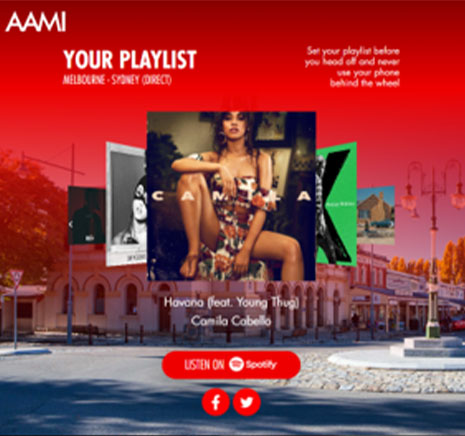
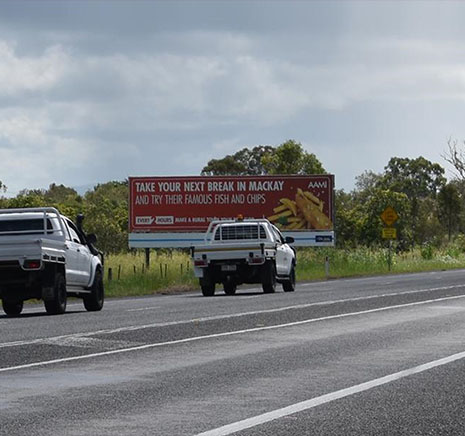
For Suncorp, regional Australian audiences are as important as metro audiences. To a degree, it’s a category nuance: Being an insurance provider, regional customers need coverage to protect what matters to them arguably more than metro ones because they face greater exposure to weather events. Couple that with nine brands in the portfolio, several state-based, and Suncorp has always been careful about how it plans geographically in order to include metro and regional audiences.
“It’s really important we make sure we’re educating customers all across Australia, and we’re engaging and servicing them with products and services they need,” Haysom explains. “So for us, metro and regional has always been equally important – in some cases, even more so in regional.”
There are other differences between metro and regional audiences to factor into the mix. Haysom points to distinct insights playing out across segments geographically based on risk profile and environmental factors.
“For instance, metro audiences are a little more apathetic to resilience messaging as opposed to some of their regional counterparts, who are more aware of the risk of weather perils they face and also look at proximity to things like emergency services,” Haysom comments.
Then there’s the impactful media cut through to consider. Haysom agrees a persistent myth hindering other brands from tapping the regional marketing growth opportunity is the idea scale isn’t as significant compared with metro.
“Given the relatively low cost of media in regional areas, plus the fact there are a lot of very affluent customers in several of these regional markets, and it can be a really profitable opportunity for a brand,” Haysom continues. “Again, it’s going to depend on your business strategy, challenges and the category you operate in. But for us as an insurer, it works incredibly well. The cost of regional media, coupled with some of the ROI opportunities, actually plays out in your favour.”

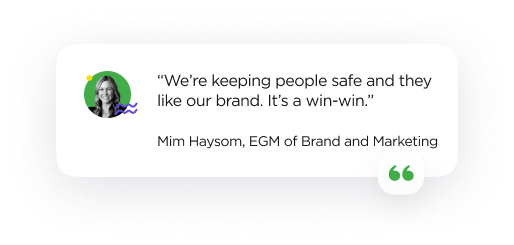

Just take the brand’s AAMI ‘Warning spots’ campaign. This used AAMI Crash Index data to identify high-risk crash locations in certain regional areas with high traffic during holiday periods such as Easter, when people take road trips. This data was complemented by partner insights and influencer travel inspirational stories. The brand first used social and digital channels to target trip intenders, then tuned into digital radio and out-of-home to target consumers in those regional areas as they travelled, promoting safety messages to make people aware of high-risk areas they were coming into.
The subsequent campaign, ‘AAMI Rest towns’, aimed to encouraged people during long haul holiday drives to stop and rest, and directed people into upcoming towns on their road trip. AAMI set up promotions with local businesses to encourage consumers to stop and spend money in local towns and created 2-hour Spotify playlists reminding drivers of when to stop. Again, radio messaging was supported by billboard advertising.
Haysom sees the benefit as twofold: Safer driving because people were stopping, and income for local regional businesses still recovering from adversity.
The result for AAMI were considerable. Ninety-two per cent of people exposed to the Warning Spots campaign expressed positive sentiment towards the brand, a significant increase on base levels, and AAMI saw a reduction in accident claims. With AAMI Rest Towns, brand consideration for AAMI rose 3.5 points initially, with the brand continuing to increase worth perceptions by 6.55 percentage points. New peaks were achieved for ‘heard good things’ (+3 percentage points); ‘most popular’, (+3 percentage points); and a rise in ‘expert in insurance’ (+5 percentage points).
“AAMI is the most considered insurance brand nationally in Australia and is quite well loved. In terms of overall consideration, +3.5 points is pretty good for one campaign to do,” Haysom says. “When we did sentiment tracking, we saw a lot of lift in perceptions around AAMI in terms of being trusted, doing good things for community, being an expert in insurance, and helping me stay safe.
“We’re keeping people safe and they like our brand. It’s a win-win.”
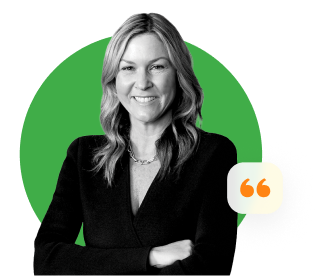
From a targeting and creative perspective, Suncorp’s ‘One House’ project and campaign was another regionally oriented program delivering customer and commercial dividends. The idea stemmed from a focus on how to help customers protect their homes from floods, cyclones and fire perils. Those more exposed to these severe weather events are commonly located in mid to North Queensland. As a result, regional audiences and needs pervaded the entire campaign.
“If people have not prepared their homes to be somewhat resilient to these increasing weather events, both in terms of number and severity, what happens when they’re displaced from their homes is they’re out of those homes for longer. The more damage, the greater the social, economic and mental health impact,” Haysom explains.
“We can’t stop the floods. So we asked: What can we do to help communities and customers who are in high-risk areas to build or modify homes to make them more resilient to today’s perils? If they are impacted, how do we ensure the damage is not as severe and they can get back into their homes quicker and with less cost and impact across all of those areas of community, social and mental health?”
The resulting ‘One House’ project saw Suncorp design a prototype home more resilient to bushfires, floods and cyclones, inside and out. The house design was based on a traditional Queenslander to reflect Suncorp’s brand heritage as well as core target segment. It was created in partnership with James Cook University, CSIRO and Room11 Architects and creative agency, Leo Burnett Australia.
The ‘One House to Save Many’ campaign incorporated a 28-minute documentary featuring regional families previously impacted by weather perils, capturing their reactions to One House and what they would do differently if they had such information on how to make their homes more resilient. Bite-size online content, TV commercials and democratised IP followed suit. Suncorp also built a product called ‘Build it back better’, making a commitment to consumers impacted by weather events to rebuild a certain level of resilience features into their replacement homes at no cost.
“That campaign did amazingly well for us. It increased consideration +10 points, or +12 points with non-Suncorp customers, which is phenomenal for one campaign to do considering we’re the second-most considered insurance brand in Queensland,” Haysom says. “It also increased customer quotes by 25%. Our new business units increased 11.1%.
“It had profound brand and business impact as seen through our tracking and marketing mix modelling. It just goes to show the power of a really strong insight, then developing something that creates true and meaningful value for customers.
“The other thing I would say is regional audiences appreciated being thought about.”
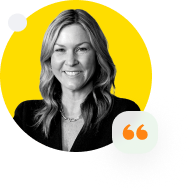
That campaign did amazingly well for us. It increased consideration +10 points, or +12 points with non-Suncorp customers, which is phenomenal for one campaign to do considering we’re the second-most considered insurance brand in Queensland. It also increased customer quotes by 25%. Our new business units increased 11.1%.
It’s clear Suncorp continues to mine insights on regional audiences and harness regional media in order to find customer growth and engagement. Haysom encourages marketers across other categories to make sure they’re proactively building out regional marketing strategies in order to find growth.
“Every brand will have a different experience of regional marketing and audiences. But I do suspect different nuances and insights could be tapped by pretty much every brand and every category,” Haysom advises. “Think about the opportunity through the lens of the customer, and also the business opportunity. If you consider regional markets and regional audiences from the outset, there is absolutely customer growth and revenue opportunity to be had.”
Read Other Case Studies



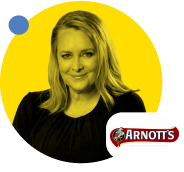
Powered By


Keep Up To Date With Boomtown
© Copyright 2024 Boomtown | All Rights Reserved | Legal Information



